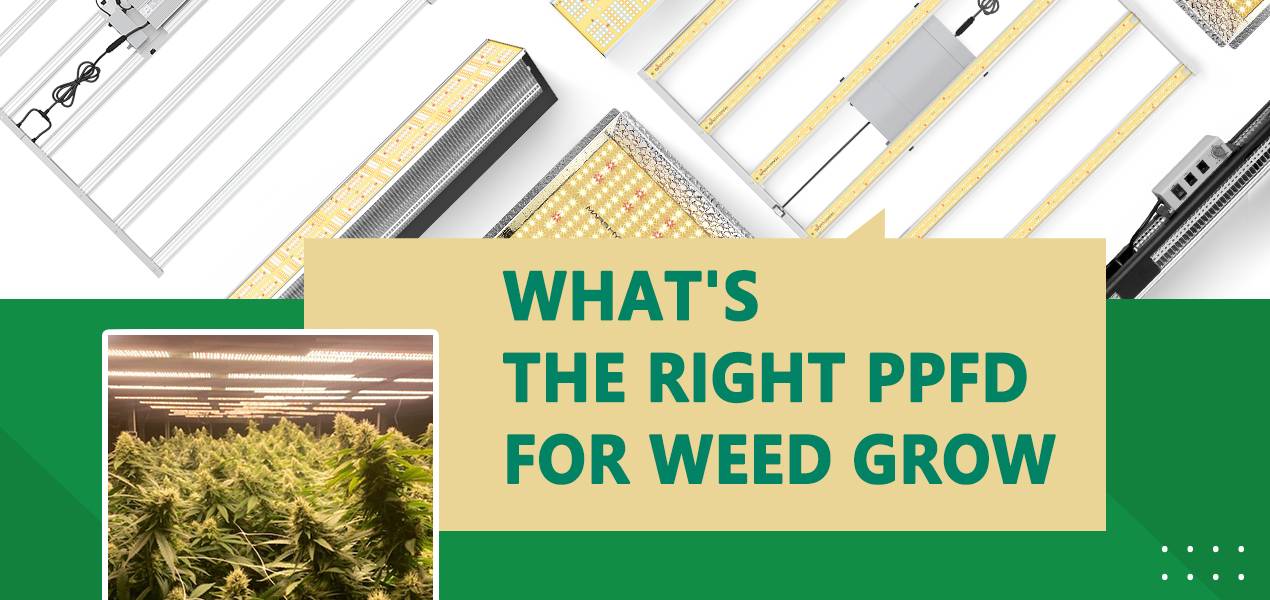
What’s The Right PPFD For Weed Grow?
August 19, 2022
What Equipment Do You Need for Growing Cannabis Indoors?
August 19, 2022No matter how much you care about your plants, cannabis leaf problems can and will bother you during the growing process. Whether you’re a beginner or an expert grower, it’s easy to feel a false sense of security about your beloved plants. The truth is that your plants are sensitive beings from seed to harvest. This article covers five areas to judge the health of cannabis and how to treat it.
- Overwatering & Underwatering
- Root Rot
- Excess Nutrients & Nutritional Deficiencies
- Inferior Environment
- Light Burn
- Pests
Overwatering & Underwatering
Observe what happens when you water your plants. There are two types of problems with improper watering, overwatering and underwatering.
- Sign of overwatering: Leaves and stems droop and curl after watering.
- Sign of under watering: The leaves will go down and the edges of the leaves will come closer to the center. It looks sturdy.
Treatment: Easy drainage and slow watering.
How to water properly:
a) Keep the top of the growing medium dry (about an inch deep)
b) See at least 20% of the extra water draining from the bottom of the pot when watering
c) Water the plant every 2-3 days. If it takes longer to dry out, you should water less at a time. If it dries out too quickly, it should get more water.

Root Rot
Signs of root rot: slimy, twisted roots with a foul odor. Leaves curl and droop.
Treatment:
a) Add beneficial root bacteria to the water to prevent and treat diseases.
b) Add oxygen: add bubbles and surface agitation to dissolve more oxygen into the water
c) Keep the roots in a dark environment, check and replace the cover with a new one regularly.
d) Keep the growing environment cool, below 27°C, and better under 24°C.
e) Keep the growing area clean: Change the water regularly. Retrieve dead leaves, dead roots, etc. in time.

Excess Nutrients & Nutritional Deficiencies
- Sign of excess nutrients: Leaf tips turn bronze, crispy, and curled. Sometimes even twisted and burnt, slowly spreading from the tip to the entire leaf.
Treatment: Add normal pH water to dilute the water or mix a new set of nutrients (lower levels), thus reducing the nutrient levels.

- Signs of nutritional deficiencies:
- Copper deficiency: Dark leaves with blue or purple undertones. Leaf tips and margins turn yellowish or white.
- Magnesium deficiency: Leaves appear light green or yellow on the veins and edges, and a large number of leaves fall off at the bottom of the plant. Sometimes the stems turn red.
- Iron deficiency: New/upper/inner leaves turning yellow, and yellow leaves eventually turning green is another sign of iron deficiency.
- Calcium deficiency: Brown or bronze spots appear on the newly grown leaves and leaves turning yellow are signs of calcium deficiency.
Treatment:
a) Adjust the pH value to the correct range
Soil culture:
Copper: 6.0 – 7.0 pH Magnesium: 6.0 – 7.0 pH
Iron: 6.0 – 6.5 pH Calcium: 6.2 – 7.0 pH
Hydroponics:
Cu: 5.5 – 6.5 pH Mg: 6.0 – 6.5 pH
Iron: 5.5 – 6.5 pH Calcium: 6.2 – 6.5 pH
b) Provide the correct nutrients
c) Check for root and watering problems, which may occur at the same time.

Inferior Environment
Too-high humidity can lead to slow growth, mold, and bud rot (especially on leafy plants or fat buds).
Too-low humidity causes slow growth and leaf stress. The ventilation system is also an important factor in providing a good environment for plants.
- Temperature control:
- Vegetative stage 78-85℉ (20-30℃)
- Flowering stage: 65-80℉ (18-26℃)
- Humidity control:
- Clones Stage:70%
- Vegetative stage 40-60%
- Flowering stage: 40-50%
For better control of your grow room environment, we recommend using VPD as the metric to measure the quality of the growing conditions for cannabis. Please check our blog The Downlow On Vaper Pressure Density.

Light Burn
Signs of light burned foliage: Stems are green and leaf edges are yellow/yellow or tan spotted. The jagged edges of the leaves are turned upwards, and the situation is worse for leaves close to the light source or heat source.
Treatment: Add small fans to the top of the plant and move grow lights further away from the top of the plant.
*Nitrogen-deficient leaves will fall off on their own, while lightly burned leaves will be difficult to remove.

Pests
Common indoor cannabis pests include aphids, spider mites, leafhoppers, and flying lice.
Simply put, pests and bugs are a grower’s nemesis, but it’s impossible not to encounter them in your growing environment. Contrary to other plants, cannabis doesn’t like chemicals (not to mention the fact that your end product will be poisoned and therefore cannot be smoked).
Treatment: fortunately, there are many organic alternatives, such as neem oil, apyretine, or pine soap. You can also make your own all-purpose natural insecticide using red pepper, paprika, or soapy water. In addition, while growing cannabis in grow tents will not really solve the problem of pest infection, it will help reduce the chances of pest invasion.

Final Words
While there are problems with lighting, nutrients, pests, etc. at every stage of the growing process, your best course of action is always prevention. Cannabis plants are very fragile in most cases, and if you take on the task of growing them, you should be told that big, plump yields and memorable highs are just the rewards for love and dedication to the plant.




